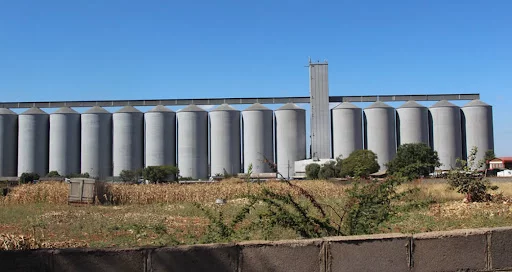The government is working on plans to ensure the country has affordable grains through sales or Social Welfare channels till March 2025, when the next harvest is expected.
Zimbabwe is among several countries that are experiencing the El Nino-induced drought and recently President Emmerson Mnangagwa declared a state of national disaster and appealed for $2 billion in humanitarian assistance.
The effects of the drought are expected to stretch to 2025.
Amid the fears of acute food shortages, the government has been assuring citizens that plans are in place to ensure food security.
Minister of Lands, Agriculture, Fisheries, Water and Rural Development, Honourable Dr Anxious Jongwe Masuka, advised the cabinet that the government and stakeholders are tracking 11 winter wheat production enablers, mainly: power, water, seed, fertilizer, fuel, farmer outstanding payments, finance, coordination, monitoring and evaluation, migratory pests, mechanisation and chemicals.
“According to the results of the “Second Round of Crops, Livestock and Fisheries Assessment” of 18 April 2024, the country’s updated food balance sheet to March 2025, indicates a shortfall of 598 425 metric tonnes at a consumption level of 7.5kg per person per month to 1 108 425 metric tonnes at a consumption of 10kg per person per month,” Dr Masuka said.
“The food security balance sheet comprises; stock held by individuals, private sector and Government; the meagre El Nino- induced drought harvest gleanings; imports by Government and the private sector; and winter cereal production. The wheat-based food security strategic intervention will reduce the import requirement by government by 486 000 metric tonnes, which is equivalent to US$189.5 million.
“Sufficient resources will therefore be deployed towards the timeous payments for local grain deliveries. The shortfall in grain requirements will be met through imports by the private sector which has indicated the capacity to import 1 000 000 metric tonnes between April 2024 and March 2025 to mitigate the effects of drought.”
The cabinet was further briefed that the Grain Marketing Board stocks as at 25 April, 2024 for maize, traditional grains and Strategic Grain Reserve Wheat are 308 139 metric tonnes, including wheat that is available for sale of 122 072 metric tonnes.
“Cumulatively, Government has 430 211 metric tonnes. Regarding the summer crops marketing update, the nation is informed that 6 998 metric tonnes of the grains and oilseeds has been marketed to date. A total of 142 000 hectares is being earmarked for irrigation and the various crops planned for winter production are wheat on 120 000 hectares; barley on 7 000 hectares; maize/sorghum on 3 200 hectares; and potatoes on 6 750 hectares to produce over 800 000 metric tonnes of which 600 000 metric tonnes shall be wheat for food security,” the Minister noted.
“The wheat production hectarage will be sponsored by the Banks; the Presidential Input Scheme; ARDA (Estates + Joint Ventures); the Food Crop Contractors Association (FCCA); and self-financing. To date, a total of 60 139 hectares has been contracted under the various schemes, out of which 1 352.5 hectares has already been planted.”
source Cite












